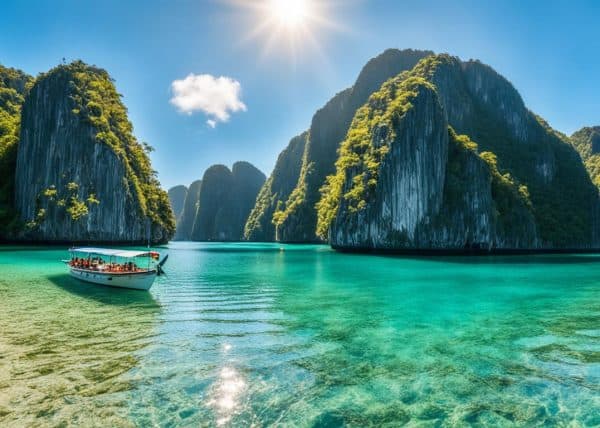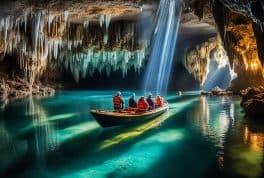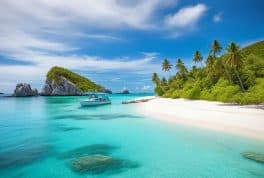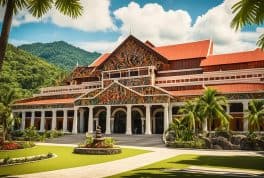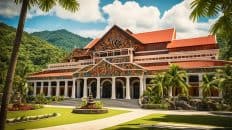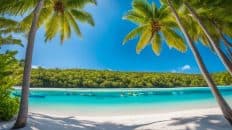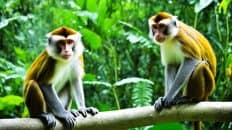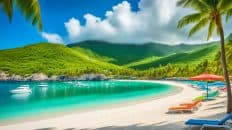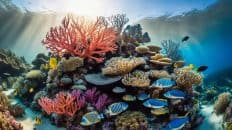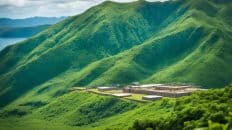Palawan Island
Palawan Island in the Philippines is celebrated for its breathtaking natural landscapes, featuring stunning limestone cliffs, pristine beaches, and diverse marine life. A UNESCO World Heritage site, it offers world-class diving, snorkeling, and island hopping experiences, making it a paradise for nature and adventure enthusiasts. Its rich cultural heritage and ecological diversity make Palawan a unique and captivating destination.
Top 10 things to see in Palawan
- Puerto Princesa Subterranean River National Park: This UNESCO World Heritage site is famous for its underground river. You can take a guided boat tour through the stunning cave systems.
- El Nido: Known for its sandy beaches, coral reefs, and as a gateway to the Bacuit archipelago. El Nido is perfect for island hopping, snorkeling, and diving.
- Coron Island: Famous for its world-class wreck diving sites, stunning limestone cliffs, and beautiful lakes like Kayangan and Barracuda Lake.
- Tubbataha Reefs Natural Park: A marine sanctuary, this UNESCO World Heritage Site is a haven for divers looking to explore vibrant coral reefs and encounter a diverse range of marine life.
- Honda Bay: Ideal for island hopping, with numerous islets such as Starfish Island and Luli Island, offering great snorkeling and beach relaxation opportunities.
- Port Barton: A quieter alternative to El Nido, this village offers beautiful beaches, snorkeling, and a relaxed atmosphere.
- San Vicente and the Long Beach: Boasting one of the longest white sand beaches in the Philippines, it's a perfect spot for those seeking tranquility and natural beauty.
- Ugong Rock Adventures: Offers caving and zip-lining experiences in a stunning karst landscape.
- Balabac Islands: Located at the southern tip of Palawan, these islands are known for their pristine beaches, clear waters, and diverse wildlife.
- Culion Island: Once a leper colony, now an intriguing historical destination with beautiful scenery, snorkeling spots, and a rich history to explore.
Guides and Tours
Cities on Palawan
- Puerto Princesa City
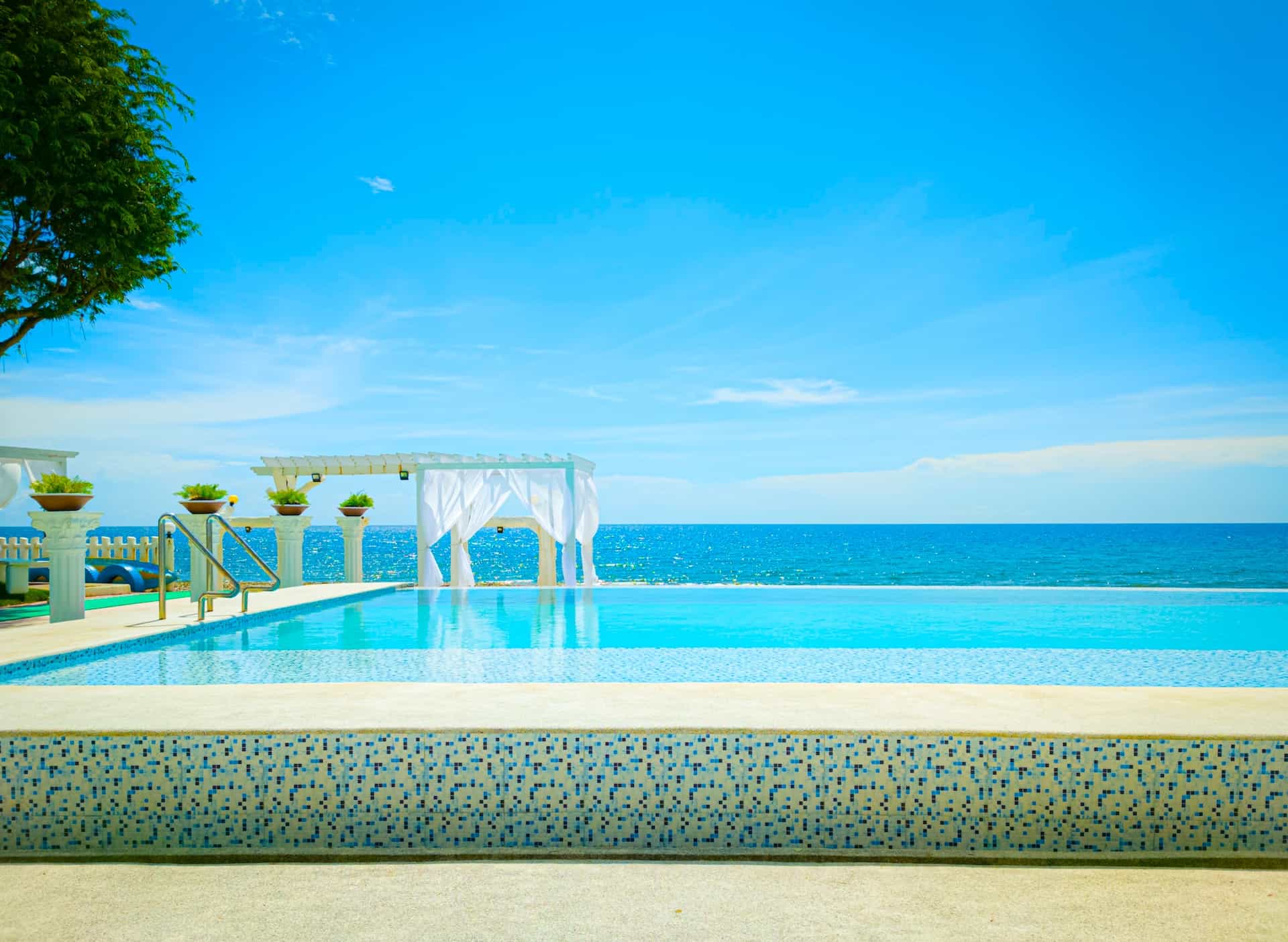
Top 10 Questions and Answers about Palawan
- What is Palawan Island known for?
- Palawan is renowned for its stunning natural beauty, including crystal-clear waters, pristine beaches, spectacular limestone cliffs, and diverse marine life. It's also famous for the Puerto Princesa Subterranean River, a UNESCO World Heritage Site.
- How do you get to Palawan Island?
- You can reach Palawan by air, with direct flights available to Puerto Princesa and El Nido from major cities in the Philippines. Alternatively, ferries are available from various points in the country.
- What is the best time to visit Palawan?
- The best time to visit is during the dry season, from November to May, when the weather is more favorable for outdoor activities and the seas are calmer for island hopping.
- Is Palawan Island safe for tourists?
- Palawan is generally safe for tourists. However, as with any travel destination, it's important to be aware of your surroundings, take standard safety precautions, and stay informed about local conditions.
- What are the must-visit places in Palawan?
- Must-visit places include El Nido, Coron Island, the Puerto Princesa Subterranean River, Tubbataha Reefs, and Honda Bay. Each of these offers unique experiences, from diving and snorkeling to exploring natural wonders.
- Can you recommend activities for adventure seekers in Palawan?
- Adventure seekers can enjoy activities like scuba diving, especially in Tubbataha Reefs and Coron, island hopping, kayaking, rock climbing, and exploring the many caves and underground rivers.
- What are the local delicacies in Palawan?
- Palawan is famous for its fresh seafood. Local delicacies include tamilok (woodworm), which is often eaten raw, and various dishes made from the abundant seafood like grilled fish, kinilaw (raw fish salad), and seafood stews.
- Are there any cultural or historical sites in Palawan?
- Yes, you can visit the Palawan Heritage Center in Puerto Princesa, the historical Culion Island, which was once a leper colony, and various indigenous communities throughout the island.
- What kind of accommodations are available in Palawan?
- Palawan offers a wide range of accommodations, from budget hostels and guesthouses to luxury resorts. El Nido and Coron have the most options, including overwater bungalows and beachfront resorts.
- Is English widely spoken in Palawan?
- Yes, English is widely spoken in Palawan, especially in tourist areas, making it easy for international travelers to communicate.
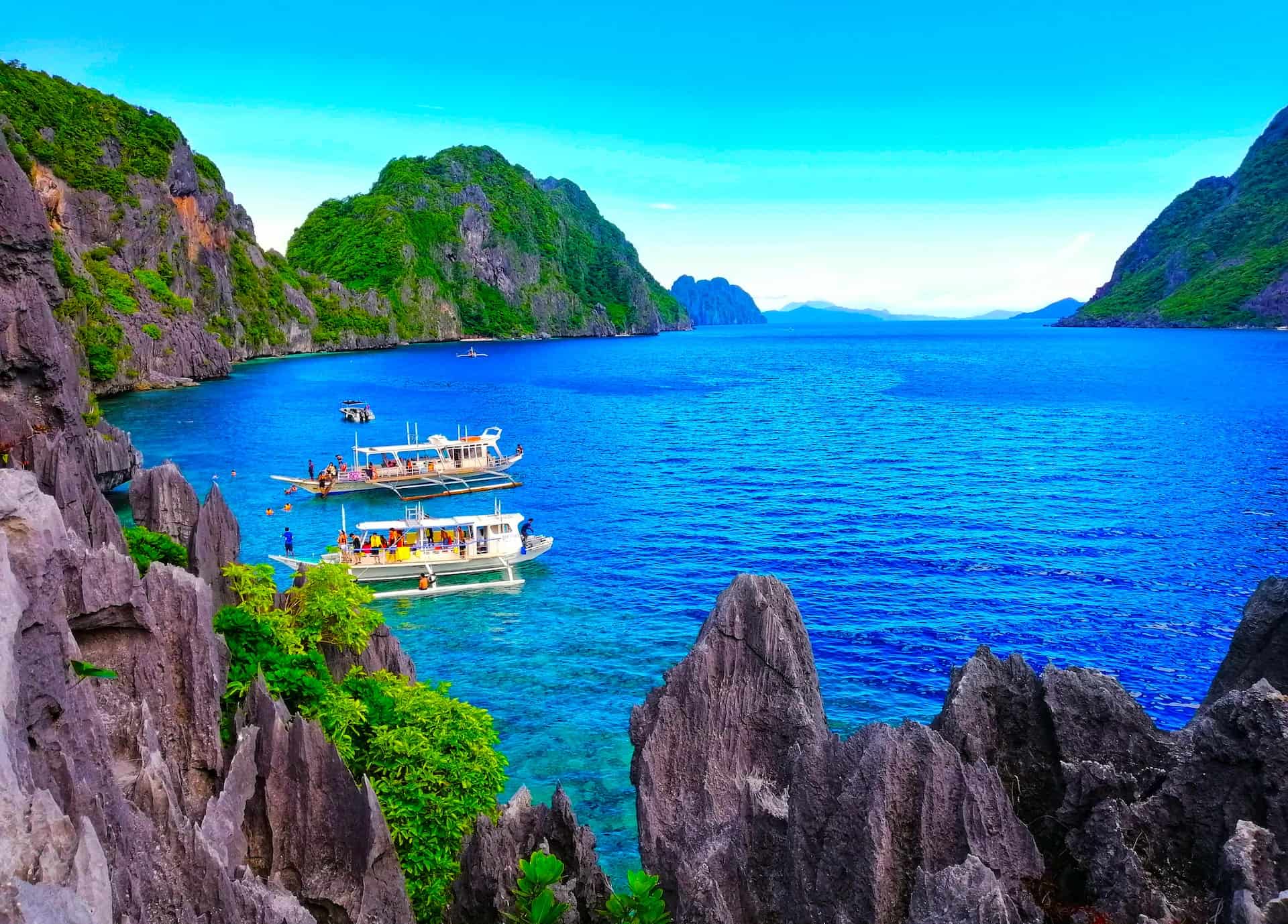
Why you should visit Palawan
Palawan: A Paradise Beyond Comparison
Introduction: The Enchantment of Palawan Nestled in the heart of Southeast Asia, the Philippines is a country made up of more than 7,000 islands, each offering its unique charm and beauty. But among these, one island stands out for its unparalleled natural splendor and tranquil ambiance - Palawan. Often hailed as the last frontier of the Philippines, Palawan is not just a destination; it's an experience, a journey into a world where nature's beauty remains unspoiled and pure.
The Natural Wonders of Palawan Palawan's landscape is a mesmerizing tapestry of biodiversity and geological marvels. The island is home to the Puerto Princesa Subterranean River National Park, a UNESCO World Heritage Site that features a spectacular limestone karst landscape with an underground river. Imagine navigating through this river, with its stunning formations of stalactites and stalagmites, and experiencing a sense of awe at nature's underground wonder.
But Palawan's allure doesn't end there. The island's seascape is equally breathtaking. El Nido and Coron are jewels in Palawan's crown, with their emerald-green waters and majestic limestone cliffs that rise dramatically from the sea. These locations are havens for snorkelers and divers, offering a glimpse into a vibrant underwater world teeming with diverse marine life.
Adventure and Serenity Combined Palawan offers a unique blend of adventure and serenity. For thrill-seekers, there's no shortage of activities: from island hopping that takes you to hidden beaches and secret lagoons to scuba diving in some of the world’s best dive sites, including the Tubbataha Reefs Natural Park and the shipwrecks of Coron.
Yet, for those seeking tranquility, Palawan is a haven of peace. The island's countless secluded beaches offer a perfect escape from the hustle and bustle of daily life. You can spend a day lounging on the powdery white sands of Long Beach in San Vicente or exploring the quaint fishing villages that dot the coastline.
Cultural Tapestry of Palawan Palawan's charm is not limited to its natural beauty. The island is also a melting pot of cultures. The indigenous communities, with their rich traditions and customs, add depth to the Palawan experience. Visiting the local villages, interacting with the friendly locals, and experiencing their way of life is a humbling and enriching experience. The island's towns, with their mix of rustic and modern elements, offer a glimpse into the Filipinos' warm and welcoming nature.
Sustainable Tourism: Palawan’s Commitment In an era where over-tourism is a growing concern, Palawan stands out for its commitment to sustainable tourism. Efforts are continually made to preserve the island's natural beauty while allowing visitors to experience its wonders. By choosing Palawan, travelers support a community that values and actively protects its ecological and cultural treasures.
Culinary Delights in Palawan Palawan's culinary scene is as diverse as its landscape. Seafood lovers will be in heaven here, with the freshest catches served daily. Local delicacies like tamilok (woodworm) and the various seafood dishes offer a taste of the island's rich bounty. The fusion of flavors, influenced by various cultures, makes dining in Palawan an adventure in itself.
Accommodations for Every Traveler Whether you're a backpacker on a budget or looking for luxury, Palawan caters to all. The island boasts a range of accommodations, from simple beachfront cottages to high-end resorts. Each place offers a unique way to experience Palawan's beauty, with many providing breathtaking views and direct access to the island's natural wonders.
Palawan: A Photographer’s Paradise For photography enthusiasts, Palawan is a dream come true. The island's stunning landscapes, from the turquoise waters of its beaches to the lush greenery of its forests, provide endless opportunities for capturing stunning images. The sunsets in Palawan, with their vibrant hues, are particularly spectacular, offering a perfect end to a day of exploration and adventure.
A Safe and Welcoming Destination One of the concerns when traveling is safety, and Palawan is known for being a safe destination for tourists. The locals are known for their hospitality and friendliness, making visitors feel welcome and at ease.
Conclusion: Why Palawan Should Be on Your Bucket List In conclusion, Palawan is more than just a travel destination; it's a paradise that offers an unforgettable escape into nature's most beautiful creations. It's a place where adventure meets tranquility, where culture and nature intertwine seamlessly, and where every moment spent is a memory cherished. Whether you're seeking adventure, relaxation, cultural immersion, or just a break from your daily routine, Palawan offers all this and more. It's a destination that truly lives up to its reputation and should be on every traveler's bucket list.
In essence, Palawan isn’t just a place you visit; it's an experience that stays with you long after you've left its shores. So, if you're planning your next vacation, look no further than Palawan – a paradise waiting to be discovered.

Palawan Facts
1: The Enchanting Realm of Palawan
Nestled in the southwestern part of the Philippines, Palawan emerges as an archipelagic province that epitomizes the quintessence of tropical paradise. Often hailed as the coron island, the largest island, the best island and the most beautiful island in the world, Palawan stretches from Mindoro to Borneo in the southwest. It is not just one island, but an entire array of islands and islets, each more enchanting than the last. This jewel of Southeast Asia is a tapestry of rich biodiversity, stunning landscapes, and a vibrant culture that beckons travelers from across the globe.
Palawan, the largest province in the Philippines in terms of land area, comprises the main island of Palawan and several nearby islands. The main island, often referred to as Palawan Island, is a narrow stretch of land that lies between the South China Sea and the Sulu Sea. With an irregular coastline that is indented by numerous bays and coves, Palawan Island boasts some of the most stunning seascapes in the country. The island is home to the main town of Puerto Princesa, the capital city, which is famed for its UNESCO World Heritage Sites and the mesmerizing underground river.
The west coast of Palawan Island is a rugged canvas of mountain ranges, virgin forests, and white sand beaches that are simply breathtaking. The east coast and largest island, facing the Sulu Sea, is softer, with gentle rolling hills and hidden coves. The island's geography is a marvel, with its central Palawan region offering a blend of the best island and two coasts’ topographies, creating a diverse and complex landscape that is as beautiful as it is unique.
Palawan's northern tip opens up to the stunning Bacuit Bay in El Nido Palawan, renowned for its limestone cliffs and crystal-clear waters. Further north, Coron Island, not to be mistaken with the coron island of the larger Coron Palawan, is an island of postcard-perfect beauty, known for its Japanese shipwrecks from World War II, which now serve as spectacular dive sites. Meanwhile, the southern tip of the main island, near Balabac Palawan, is a less-trodden paradise that offers a more secluded and intimate experience with nature.
The beauty of Palawan is not just confined to its land. The surrounding seas are a haven for marine life, boasting some of the richest and most diverse coral islands in the world. These waters are a playground for divers and snorkelers, who come to explore the underwater wonders and experience the abundant sea life in its natural habitat.
Puerto Princesa City, the urban center of Palawan, is more than just a gateway to the island's many wonders. It's a vibrant city that offers a glimpse into the local life and culture of Palawan. From here, tourists can embark on island hopping tours to the nearby islands and islets, each offering a unique experience. The Puerto Princesa Underground River, a UNESCO World Heritage Site, is one of the city's crowning jewels. This subterranean river flows through a spectacular cave system and is a testament to the island's natural wonders.
The island of Palawan is not just a haven for beach lovers and adventure seekers. It is also a wildlife sanctuary, home to many species of flora and fauna that are endemic to the region. The forests of Palawan are a biodiversity hotspot, with an incredible variety of birds, mammals, and reptiles. The Palawan leopard cat, a small feline species, is one of the many species that call this island home.
For those looking to immerse themselves in local culture, Palawan does not disappoint. The indigenous peoples of Palawan, with their rich traditions and customs, add another layer of charm to the island. Their way of life, closely tied to the land and sea, is a fascinating aspect of Palawan's cultural heritage.
Transportation to Palawan is convenient, with regular flights from Manila to Palawan, connecting the island to the rest of the Philippines and beyond. The Palawan airport in Puerto Princesa is the main hub, with other smaller airports like Lio Airport in El Nido serving the northern parts of the island. Once on the island, exploring is easy, whether by backride Palawan, local tricycles, or rented vehicles.
Accommodation options in Palawan cater to all preferences and budgets. From the luxurious Astoria Palawan and Club Paradise Palawan to more budget-friendly hotels in El Nido Palawan and Puerto Princesa Palawan, visitors are spoiled for choice. Dining in Palawan is another delightful experience, with local restaurants serving up fresh seafood and traditional Filipino dishes.
Palawan's climate is tropical, with little variation throughout the year. However, the pronounced rainy period from June to early December should be taken into consideration when planning a trip. Despite this, Palawan's natural beauty shines through, regardless of the rainy season.
In summary, Palawan, with its enchanting landscapes, rich biodiversity, and vibrant culture, is more than just a destination; it's an experience that lingers in the hearts of those who visit. From the pristine beaches of El Nido Palawan to the historic shipwrecks of Coron Palawan, from the bustling streets of Puerto Princesa City to the tranquil coves of its southern islands, Palawan offers a slice of paradise that is unparalleled in its beauty and diversity. As one explores this beautiful island, they truly understand why Palawan is often hailed as not just the best island in the Philippines, but in the world.
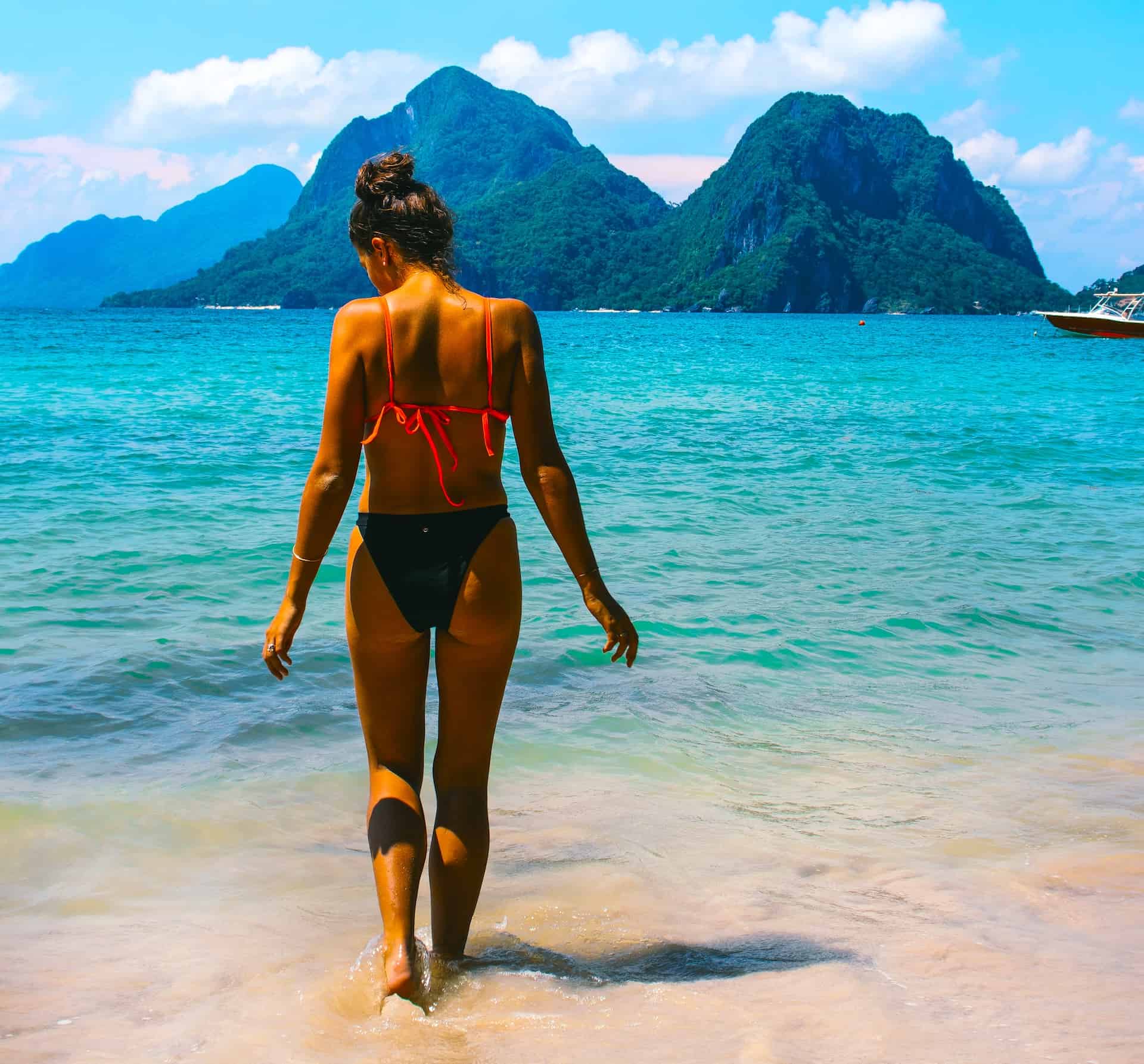
2: The Geographic Splendor and Ecological Tapestry of Palawan
The island province of Palawan, located in the westernmost fringes of the Philippine archipelago, is a geographic masterpiece that paints a vivid picture of natural diversity and ecological richness. Spanning over 400 kilometers in length, Palawan is not only the largest island province in the Philippines by area but also one of the most geographically diverse regions in Southeast Asia. This section delves into the intricate geography of Palawan, exploring its varied landscapes, from mountainous terrains to its iconic underground river, and the ecological wonders that these habitats support.
Palawan, often termed the "last frontier" of the Philippines, possesses a topography that is as varied as it is dramatic. The main island, also referred to as Palawan Island, forms the backbone of this vast province. Stretching from the northern tip near Borneo to the southern tip, it is flanked by numerous smaller islands and islets, each contributing to the province's reputation as a tropical paradise. The main island's spine is formed by a series of mountain ranges that run its entire length, creating a natural barrier that divides the west coast from the rest of the island.
The west coast of Palawan Island is an area of outstanding natural beauty. The rugged coastline, characterized by its irregular shape, is dotted with white sand beaches, secluded coves, and dramatic limestone cliffs. These cliffs, particularly prominent in areas such as El Nido Palawan and Coron Palawan, rise majestically from the emerald waters of the Sulu Sea, creating landscapes that are nothing short of awe-inspiring. The beaches along this coast, often cited among the best beaches in the world, are typified by powdery white sands and crystal-clear waters, providing idyllic settings for relaxation and water-based activities.
In contrast, the eastern side of Palawan Island, facing the vast expanse of the Sulu Sea, presents a gentler landscape. Here, the mountains give way to rolling hills and valleys, leading down to serene beaches and mangrove forests. This side of the island is less frequented by tourists, offering a more untouched and tranquil experience of Palawan island's natural beauty.
Central Palawan is a melting pot of the island's diverse landscapes. It is here that one finds a mix of coastal plains, rolling hills, and dense forests, creating a rich tapestry of habitats that support an incredible array of wildlife. The region is a testament to Palawan's status as a biodiversity hotspot, a place where endemic species of flora and fauna thrive.
Perhaps the most famous of Palawan's natural wonders is the Puerto Princesa Underground River. Located on the island's western coast, this UNESCO World Heritage Site is a marvel of the natural world. The underground river flows through a spectacular limestone cave system before emptying into the South China Sea. A boat trip through the dark, echoing chambers of the cave reveals stunning formations of stalactites and stalagmites, with the river itself hosting a unique ecosystem of aquatic creatures.
Palawan's ecological significance extends beyond its landforms. The surrounding waters are a treasure trove of marine biodiversity, home to some of the most vibrant coral reefs in the world. These coral islands and reefs provide critical habitats for a multitude of marine species, from colorful reef fish to larger predators like sharks and rays. The waters around Palawan are also an important breeding ground for sea turtles, adding to the province's ecological importance.
The island's diverse ecosystems are not just a haven for wildlife; they also play a crucial role in supporting the local communities. The forests of Palawan are rich in valuable timber and other resources, while the seas provide a bounty of seafood that sustains the fishing industry. This close relationship between the people of Palawan and their natural environment is a defining characteristic of the island's culture and way of life.
Palawan's commitment to preserving its natural and unesco world heritage sites is evident in the numerous protected areas and wildlife sanctuaries established across the island. These protected areas, such as the Calauit Game Preserve and the Tubbataha Reefs Natural Park (another UNESCO World Heritage Site), are crucial for the conservation of Palawan's unique biodiversity. Efforts to protect and conserve these natural wonders are ongoing, with local communities and government agencies working together to ensure that Palawan's natural beauty is preserved for future generations.
In addition to its natural wonders, Palawan's geography also has a significant impact on the local climate. The island experiences a tropical climate with a pronounced rainy period, with peak season typically lasting from early June to December. However, the mountain ranges and the surrounding seas moderate the climate, ensuring that Palawan does not experience extreme weather conditions during peak rainy season here. This relatively stable climate is conducive to the growth of lush vegetation and supports the island's diverse ecosystems.
As a travel destination, Palawan offers a unique blend of adventure, relaxation, and ecological exploration. The island's varied geography provides a backdrop for a range of activities, from trekking in the mountainous interior to diving in the coral-rich waters. For those interested in exploring the underwater world, Palawan's dive sites are among the best in the Philippines, offering opportunities to encounter a wide variety of marine life in pristine conditions.
In conclusion, the geographic splendor and ecological tapestry of Palawan are what set this island province apart as a destination of unparalleled natural beauty. From the dramatic limestone cliffs of El Nido to the serene beaches of its eastern coast, from the dense forests of central Palawan to the spectacular underground river, the island is a showcase of nature's artistry. As travelers explore the diverse landscapes of Palawan, they are treated to a journey through some of the most breathtaking scenery in Southeast Asia, a journey that leaves a lasting impression on all who visit this enchanting island.
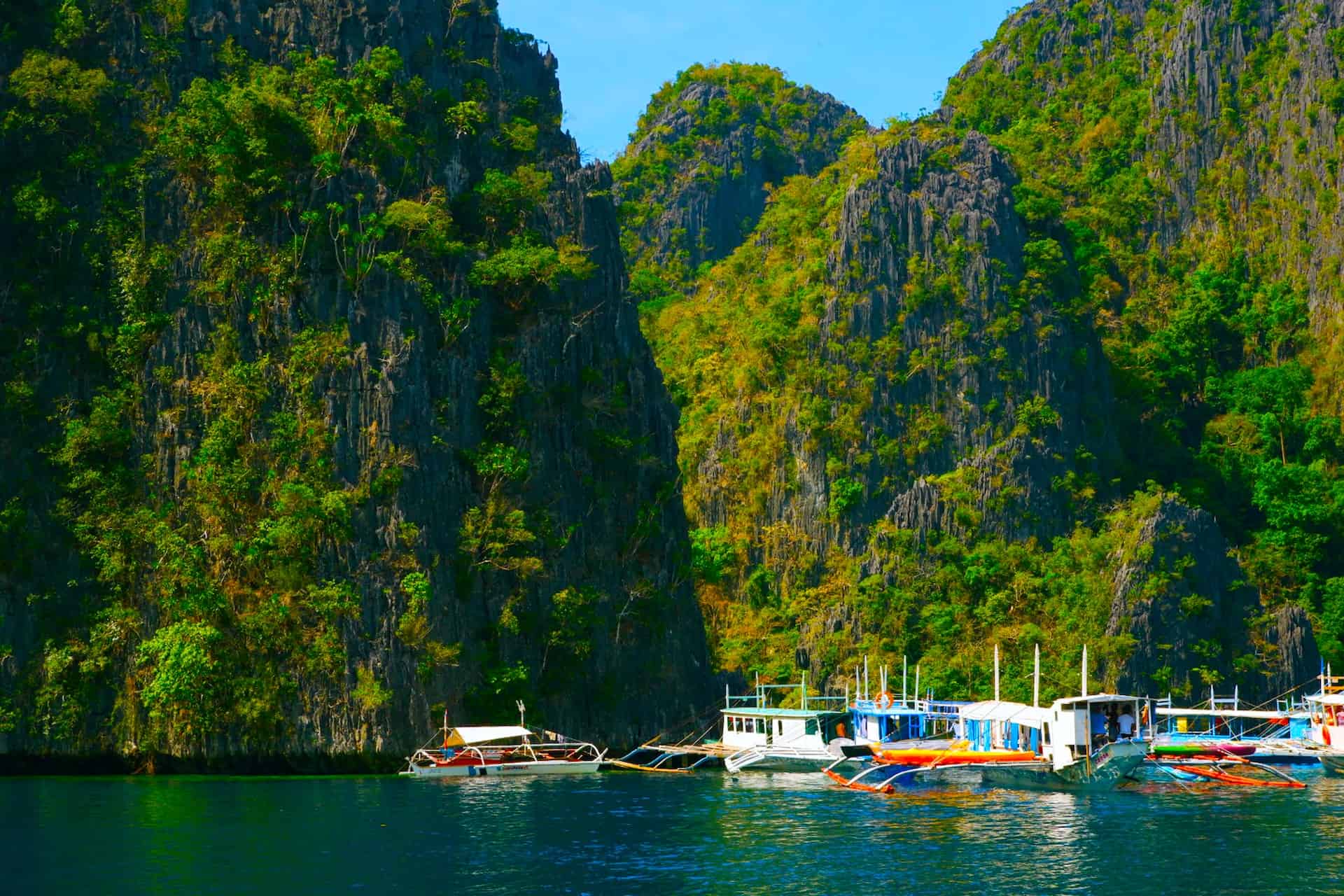
3: Palawan's Historical and Cultural Landscape
Palawan, a name that resonates with the mystique of a hidden paradise, is not just a sanctuary of natural wonders but also a crucible of rich history and cultural heritage. This section of the article delves into the historical and cultural tapestry of Palawan, unraveling the threads of its past and present that weave together to form the vibrant fabric of this unique island province.
The history of Palawan island is as layered and diverse as its landscapes. Archaeological findings suggest that the island has been inhabited since prehistoric times. The Tabon Caves, located on the southwestern coast of Palawan Island, are particularly significant. These caves have yielded some of the oldest human remains in Southeast Asia, providing a glimpse into the life of early inhabitants. These early settlers, ancestors of today's indigenous peoples, laid the foundation for the rich tapestry of cultures that define Palawan island today.
Palawan's strategic location between Borneo and the rest of the Philippine archipelago has made it a crossroads of different cultures throughout history. From the early trading days to the colonial era, the island has seen the influence of various powers, including the Spanish, American, and Japanese. These influences left indelible marks on the island's culture, from architecture and language to food and traditions.
The impact of World War II on Palawan cannot be understated. The island played a significant role during the war, particularly in the context of the Pacific theater. The remnants of this turbulent period are still visible today, most notably in the form of Japanese shipwrecks that lie beneath the waters around Coron Island. These wrecks, now covered in coral and teeming with marine life, are not only popular dive sites but also poignant reminders of the past.
In more recent history, Palawan has emerged as a beacon of environmental conservation and sustainable tourism. The local government and communities have been instrumental in preserving the island's natural beauty and cultural heritage, balancing development with ecological preservation.
The cultural fabric of Palawan is as diverse as its natural ecosystems. The island is home to several indigenous groups, each with its own distinct language, traditions, and way of life. These groups, including the Tagbanua, Palaw'an, and Batak tribes, are an integral part of Palawan's cultural identity. Their deep connection with the land and sea is reflected in their customs, beliefs, and practices, which have been passed down through generations.
The cultural festivals of Palawan are a colorful manifestation of its rich heritage. These festivals, often centered around agricultural cycles or religious events, are a vibrant display of dance, music, and traditional attire. They provide an opportunity for visitors to experience the island's culture firsthand and engage with local communities.
The influence of the Palawan island's history and culture is also evident in its culinary traditions. The island's cuisine is a fusion of indigenous, Malay, Spanish, and Chinese influences, resulting in a unique and flavorful gastronomic experience. Seafood is a staple, given the Palawan island's coastal location, with dishes often featuring the freshest catch from the surrounding seas. Traditional cooking methods, such as grilling over an open flame or cooking with coconut milk, add to the authenticity of the culinary experience.
Art and craftsmanship in Palawan are deeply rooted in the island's traditions and natural environment. Local artisans create a variety of handicrafts, including woven fabrics, wood carvings, and jewelry, often using materials sourced from the island's rich natural resources. These handicrafts are not only beautiful works of art but also a reflection of the island's cultural identity and environmental consciousness.
The language and literature of Palawan are another aspect of its cultural wealth. While Filipino and English are widely spoken, the island's indigenous languages, such as Cuyonon, Tagbanwa, and Palawano, are still used within local communities. These languages, along with the oral traditions and folktales passed down through generations, are an important part of Palawan's cultural heritage.
In recent years, efforts have been made to document and preserve these languages and traditions, recognizing their importance in the cultural tapestry of the island. Initiatives such as cultural festivals, museum exhibits, and educational programs aim to keep these traditions alive and share them with a wider audience.
As a travel destination, Palawan offers more than just scenic beauty. It invites visitors to immerse themselves in its history and culture, to learn about the island's past, engage with its people, and appreciate the diversity that makes Palawan unique. From exploring ancient caves to participating in local festivals, from savoring traditional dishes to admiring the craftsmanship of local artisans, the cultural experiences in Palawan are as enriching as they are varied.
In conclusion, the historical and cultural landscape of Palawan is a rich and vibrant tapestry that adds depth and character to the island's natural beauty. The stories of its past, the traditions of its people, and the influence of various cultures come together to create a unique and captivating experience for those who visit. As travelers explore Palawan, they discover not just a paradise of white sand beaches and crystal-clear waters but also a place with a soul, shaped by its history and enriched by its culture.
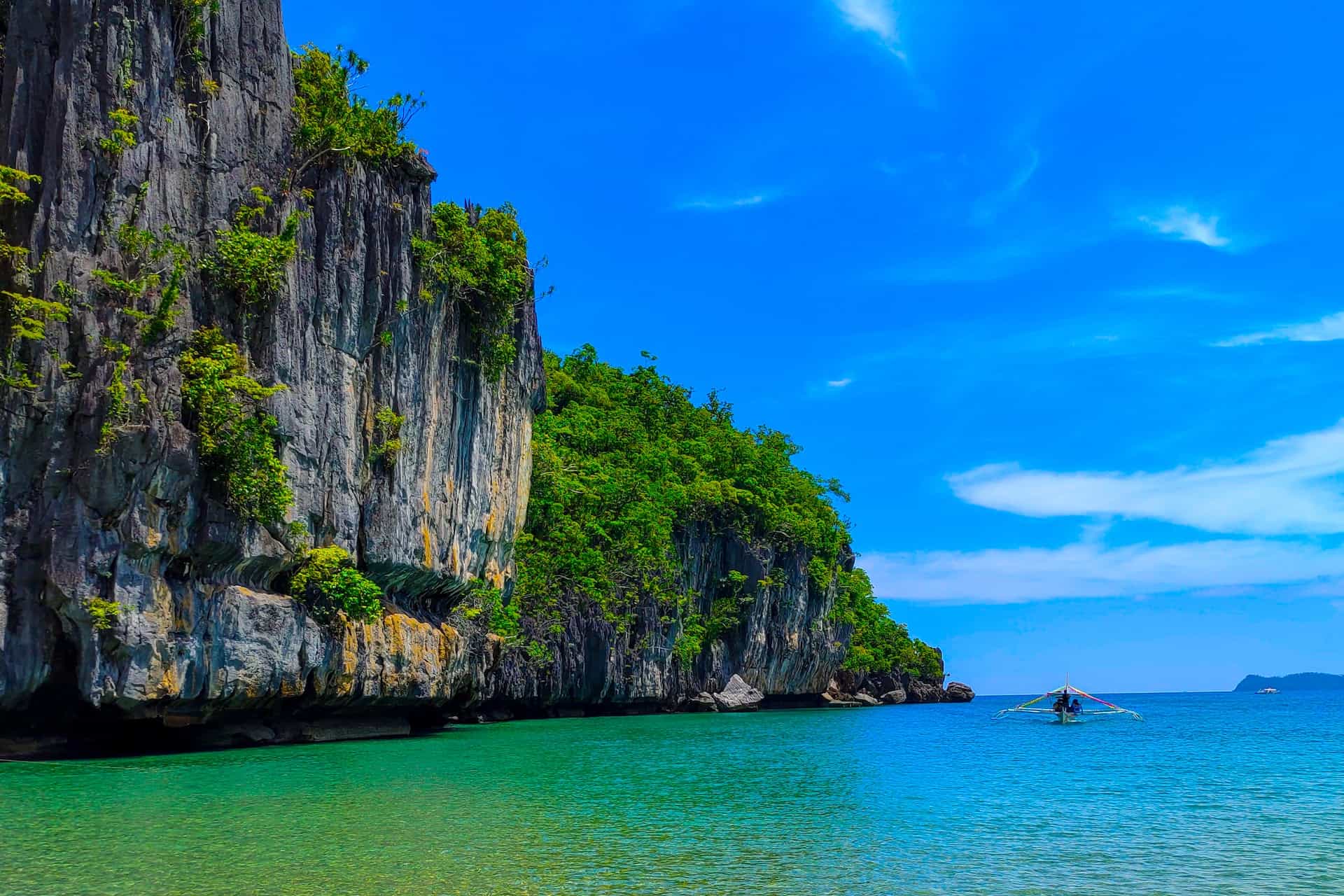
4: Exploring the Major Destinations and Attractions of Palawan
In the heart of Southeast Asia lies Palawan, a province of the Philippines that has become synonymous with idyllic beauty and unspoiled nature. Palawan, often referred to as the "Last Frontier" of the Philippines, is not just a single island but an archipelago of over 1,700 islands and islets, each offering a unique allure. This section of the article takes you on a journey through the major destinations and attractions of Palawan, showcasing the best that this stunning province has to offer.
Puerto Princesa: The Urban Gateway to Palawan's Wonders
Puerto Princesa, the capital city of Palawan, serves as the main gateway to the province's myriad attractions. This city, located in the central and southern part of Palawan Island, is not just an urban hub but also a destination in its own right. The star attraction here is the Puerto Princesa Subterranean River National Park, a UNESCO World Heritage Site. This park is home to the famous underground river, a marvel of nature where a river winds through a series of caves before flowing into the South China Sea. The river's caverns are adorned with stunning stalactites and stalagmites, making a boat trip through this subterranean wonder an unforgettable experience.
Apart from the underground river, Puerto Princesa offers a range of other attractions. The city's vibrant markets, bustling streets, and array of restaurants provide a glimpse into the local life and culture of Palawan. For nature enthusiasts, the Honda Bay, located on the eastern shore of Puerto Princesa, is a popular spot for island hopping tours. The bay's clear waters and coral reefs are perfect for snorkeling and diving, offering a chance to explore the underwater world of Palawan.
El Nido: A Tropical Paradise
Moving northward from Puerto Princesa, one encounters the enchanting town of El Nido. Nestled at the northern tip of Palawan Island, El Nido is famed for its towering limestone cliffs, hidden lagoons, and pristine beaches. The area is part of the country' larger El Nido-Taytay Managed Resource Protected Area, emphasizing the country' commitment to preserving this natural wonder.
El Nido is the gateway to the Bacuit Archipelago, a group of islands with dramatic karst formations, secluded beaches, and clear blue waters. Island hopping tours in El Nido are a must-do, taking visitors to spots like the Big and Small Lagoons, Secret Beach, and Snake Island. These tours offer opportunities for snorkeling, kayaking, and simply relaxing on some of the most beautiful beaches in the world.
Coron: A Diver's Haven and a History Buff's Delight
Further north of best island and largest province of Palawan lies the stunning area of Coron, part of the Calamian Islands. Coron is renowned for its world-class wreck diving, with several Japanese shipwrecks from World War II lying beneath its clear waters. These historic wrecks, encrusted with coral and teeming with marine life, provide an eerie yet fascinating underwater experience.
Coron is also famous for its natural beauty above water. Kayangan Lake, often cited as the cleanest lake in the Philippines, is a must-visit. Its crystal-clear waters and surrounding rock formations create a serene and picturesque setting. The Twin Lagoons beach and Barracuda Lake are other popular destinations in Coron, offering unique swimming and snorkeling experiences.
San Vicente: The Emerging Star of Palawan
San Vicente, located on the northwest and southwest coast of Palawan Island, is an emerging tourist destination known for its long stretch of white sand beaches. The town's flagship attraction is the Long Beach, a 14-kilometer stretch of unspoiled coastline that is one of the longest white sand beaches in the Philippines. San Vicente is less commercialized than El Nido and Coron, offering a more laid-back and serene atmosphere.
The area around San Vicente is also home to a variety of wildlife, making it a great destination for nature lovers. The nearby islands and islets provide additional opportunities for exploration and enjoyment of Palawan's natural beauty.
Exploring the Lesser-Known Gems of Palawan
Beyond these main destinations, Palawan is dotted with numerous lesser-known spots that are equally captivating. From the southern island of Balabac with its crystal-clear waters and untouched beaches to the northern Calauit Safari Park, home to a unique mix of African and endemic wildlife, Palawan offers a plethora of experiences for the adventurous traveler.
Cultural and Historical Attractions
Apart from natural wonders, Palawan is also rich in cultural and historical sites. The Cuyo Fort in the Cuyo Islands is a testament to the Spanish colonial era, while the Tabon Caves offer a glimpse into the prehistoric past of the Philippines. These sites provide a deeper understanding of the history and culture that have shaped Palawan.
Palawan: A Destination for All
Whether it's the urban charm of Puerto Princesa, the natural splendor of El Nido and Coron, the emerging beauty of San Vicente, or the hidden gems scattered across the province, Palawan offers something for every traveler. Each destination in Palawan is a world unto itself, yet all are united by the province's overarching themes of breathtaking natural beauty, rich history, and vibrant culture.
In conclusion, the major destinations and attractions of Palawan are as diverse as they are numerous. From the underground river of Puerto Princesa to the limestone cliffs of El Nido, from the historic wrecks of Coron to the pristine beaches of San Vicente, Palawan is a mosaic of experiences waiting to be discovered. Whether seeking adventure, relaxation, cultural immersion, or ecological exploration, Palawan is a destination that not only meets but exceeds expectations, leaving visitors with memories that last a lifetime.
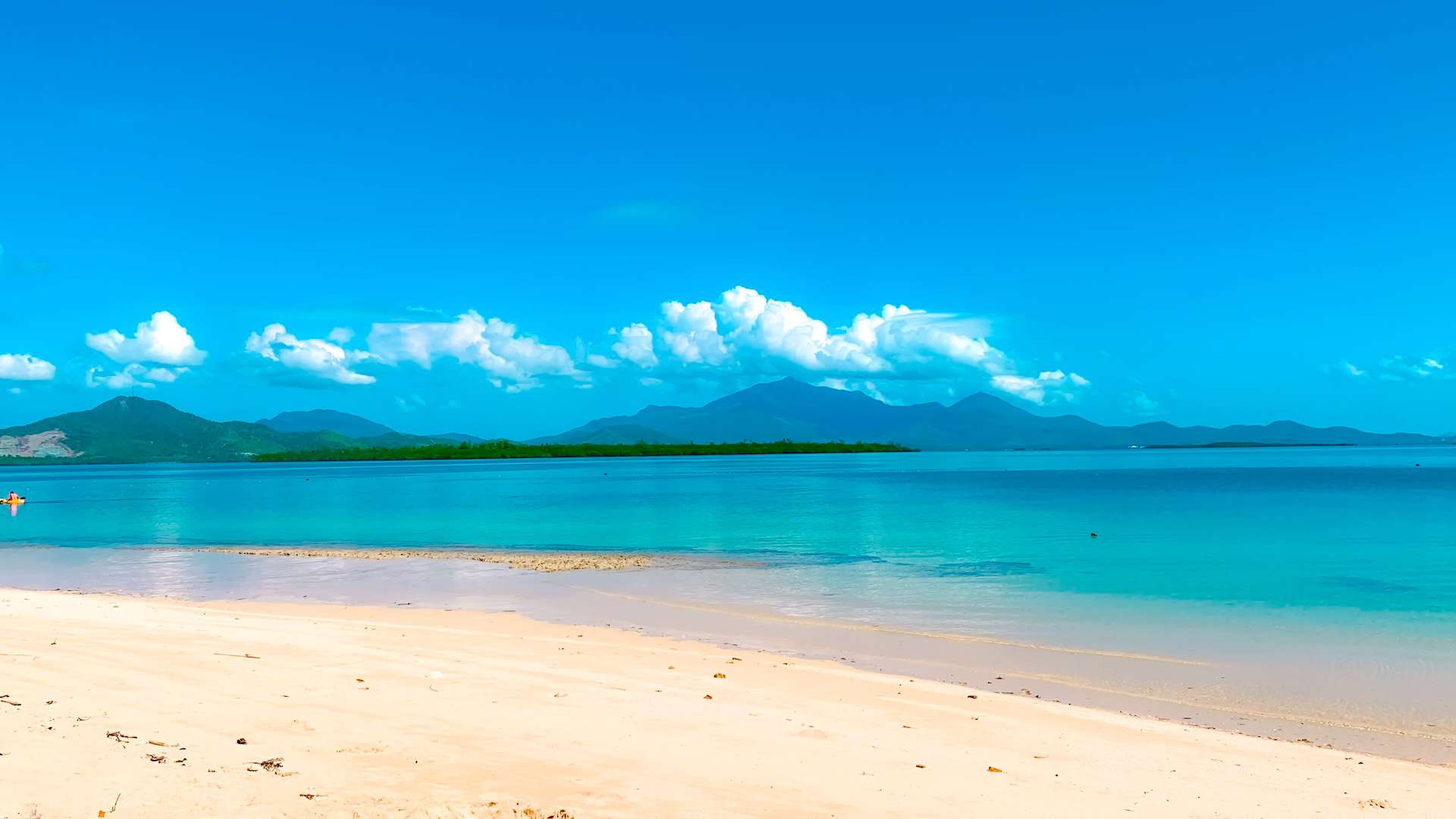
5: Palawan's Biodiversity and Environmental Conservation Efforts
Palawan, a name that resonates with the essence of unspoiled nature and biodiversity, is a veritable Eden in the Philippine archipelago. Known as the Philippines' "Last Frontier," Palawan is a shining beacon of ecological diversity, hosting a wealth of flora and fauna, many of which are endemic to the island. This section delves into the biodiversity of Palawan and the concerted efforts being made to preserve this ecological paradise.
The Ecological Richness of Palawan
The biodiversity of Palawan is staggering in its variety and uniqueness. The island's diverse ecosystems, ranging from lush rainforests and mangroves to vibrant coral reefs, provide habitats for an astonishing array of species. Palawan's terrestrial and marine environments are home to a plethora of animals and plants, many of which are found nowhere else in the world.
In the dense forests of Palawan, one can find a wide array of wildlife. The Palawan bearcat, a peculiar and elusive mammal, roams the canopy, while the Palawan peacock-pheasant displays its iridescent plumage on the forest floor. The Palawan hornbill, with its distinctive call, is a common sight in the island's jungles. These forests are also a wildlife sanctuary, for the Palawan leopard cat, a small but vital predator in the island's ecological balance.
The waters surrounding Palawan are equally rich in biodiversity. The province is surrounded by some of the most pristine and biologically diverse coral reefs in the world. These reefs are teeming with life, including a myriad of fish species, sea turtles, and other marine creatures. The Tubbataha Reefs Natural Park, a UNESCO World Heritage Site located in the Sulu Sea, is a prime example of Palawan's underwater marvels. This marine park is a haven for divers, offering a glimpse into the vibrant underwater world of Palawan.
Conservation Efforts in Palawan
Recognizing the ecological significance of Palawan, various conservation initiatives have been implemented to preserve its natural heritage. These efforts are a collaboration between the government, non-governmental organizations, local communities, and international bodies.
One of the flagship conservation projects in Palawan is the preservation of the Puerto Princesa Subterranean River National Park. This park, apart from being a UNESCO World Heritage Site, is also designated as a Ramsar Wetland Site, highlighting its importance as a natural habitat. Conservation efforts here focus on protecting the unique cave systems and the diverse species that inhabit them, including the notable swiftlet birds whose nests are prized for bird's nest soup.
The Palawan Council for Sustainable Development (PCSD) is another key player in the island's environmental conservation. The PCSD is tasked with overseeing and coordinating all environmental efforts in Palawan, ensuring that development is balanced with ecological preservation. Their work includes habitat conservation, species protection, and sustainable use of natural resources.
Community-based sustainable tourism is also a significant part of Palawan's conservation strategy. By involving local communities in tourism, Palawan ensures that the benefits of this industry are shared with those who call the island home. This approach not only provides economic opportunities for local residents but also fosters a sense of stewardship over the natural environment.
The Challenges of Conservation
Despite these efforts, Palawan faces several challenges in its quest to preserve its natural environment. The rapid growth of tourism, if unchecked, poses a risk to the island's ecosystems. The influx of visitors can lead to habitat degradation, pollution, and strain on natural resources. Balancing the economic benefits of tourism with environmental protection is a delicate task that requires careful planning and management.
Illegal activities, such as poaching and illegal logging, are ongoing concerns in Palawan. These practices not only harm the wildlife and forests but also undermine the efforts to preserve the island's biodiversity. Vigilant enforcement of environmental laws and community engagement are crucial in combating these illegal activities.
Climate change is another looming threat that could have significant impacts on Palawan's ecosystems. Rising sea levels, changing weather patterns, and increasing ocean temperatures could alter the island's landscapes and habitats, posing challenges for both wildlife and human communities.
The Way Forward for Palawan's Biodiversity
Looking ahead, the future of Palawan's biodiversity hinges on sustained and collaborative conservation efforts. Education and awareness campaigns are vital in cultivating an understanding of the importance of preserving Palawan's natural heritage. By educating both locals and visitors about the value of the environment, a stronger conservation ethos can be fostered.
Research and monitoring are also key components of effective conservation. By understanding the dynamics of Palawan's ecosystems and the impacts of human activities, more informed and effective conservation strategies can be developed.
In conclusion, the biodiversity of Palawan is a treasure that needs to be safeguarded for future generations. Through concerted conservation efforts, sustainable development, and community engagement, Palawan can continue to be a shining example of ecological diversity and natural beauty. As we journey through this remarkable island, we are reminded of our responsibility to protect and cherish the natural world, a world that Palawan so magnificently epitomizes.
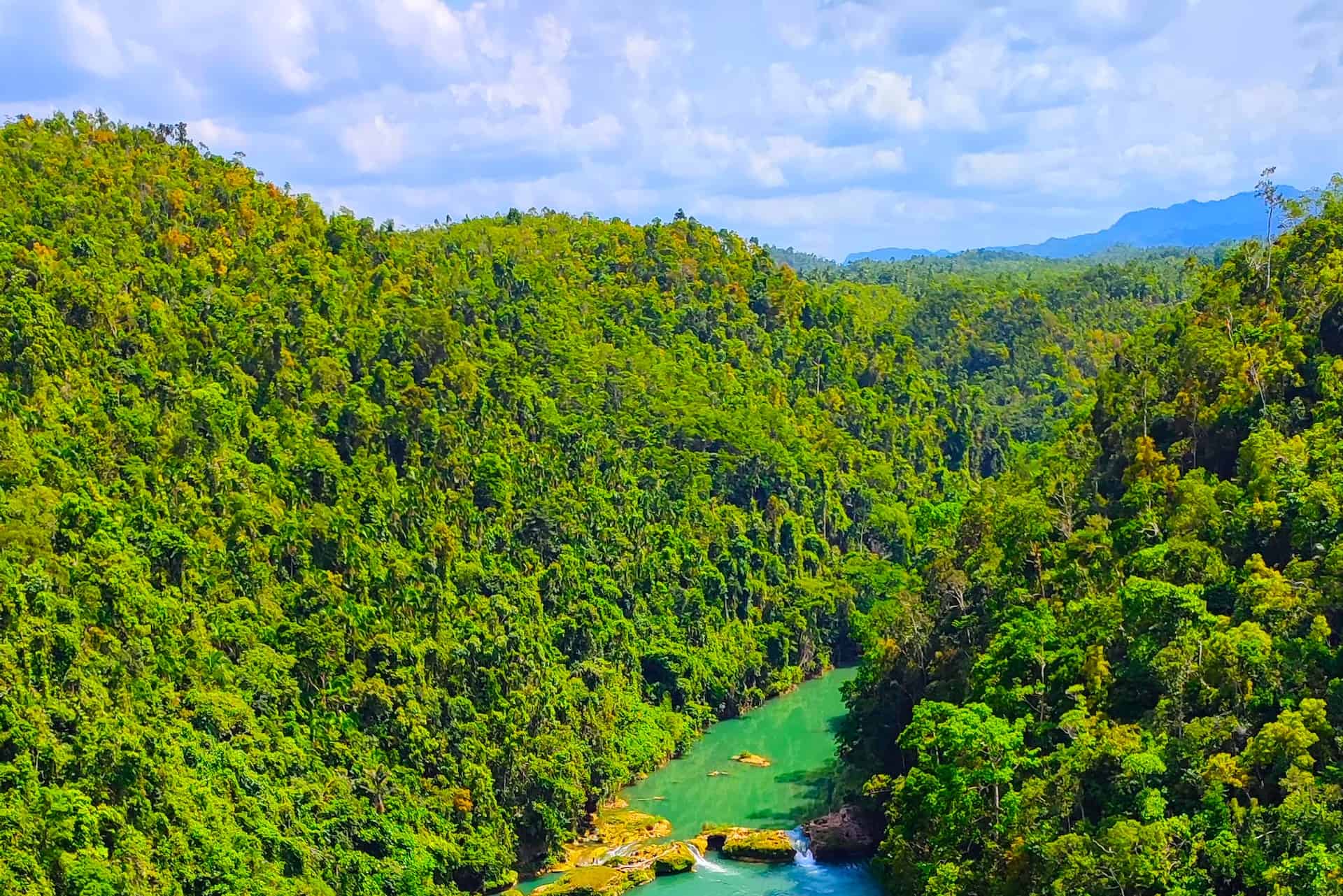
6: The Economic and Tourism Landscape of Palawan
Palawan, an archipelago province in the Philippines, is a mosaic of stunning natural beauty, rich cultural heritage, and a burgeoning economy largely driven by tourism. This section delves into the economic and tourism landscape of Palawan, highlighting how this beautiful island province has become a pivotal destination in Southeast Asia, balancing economic growth with sustainable tourism.
Tourism: The Heartbeat of Palawan's Economy
Tourism is the lifeblood of Palawan's economy. The province's natural beauty, from its pristine beaches and lush rainforests to its world-renowned dive sites and unique and wildlife sanctuary, has made it a magnet for tourists from around the globe. Palawan has consistently been recognized as one of the best island destinations in the world, attracting a diverse range of visitors – from backpackers and adventure seekers to luxury travelers.
The influx of tourists has spurred significant economic activity in Palawan. The hospitality industry has flourished, with a wide array of accommodations ranging from budget hostels to high-end resorts. Places like El Nido, Coron, and Puerto Princesa have seen a surge in hotels, guesthouses, and resorts catering to the growing tourist demand. Dining establishments, from local eateries serving traditional Filipino cuisine to international restaurants, have also proliferated, adding to the province's economic vitality.
Moreover, Palawan's tourism industry has created a multitude of job opportunities for locals. From tour guides and dive instructors to hotel and restaurant staff, the sector has become a vital source of employment, contributing significantly to the local economy. This influx of tourism-related jobs has not only improved the standard of living for many residents but has also helped stem the tide of out-migration, a common issue in many rural regions of the Philippines.
The Challenges of Balancing Tourism and Sustainability
While tourism has brought economic prosperity to Palawan, it also poses significant challenges, particularly in terms of environmental sustainability and cultural preservation. The growing number of visitors has led to concerns over environmental degradation, with issues such as waste management, water scarcity, and damage to coral reefs becoming increasingly pressing.
Palawan's government and local communities, aware of these challenges, have been working towards sustainable tourism practices. Efforts include implementing stricter environmental regulations, promoting eco-friendly tourism activities, and encouraging responsible travel behavior among visitors. Environmental education campaigns aimed at both tourists and locals play a crucial role in these efforts, fostering a culture of respect and care for Palawan's natural and cultural heritage.
Diving and Island Hopping: Pillars of Palawan's Tourist Appeal
Diving and island hopping are two of the main attractions that have put Palawan on the global tourism map. The province's crystal-clear waters, abundant marine life, and spectacular coral reefs make it a premier diving destination. Dive sites around Tubbataha Reefs Natural Park, Barracuda Lake in Coron, and the waters off El Nido offer some of the best diving experiences in the world.
Island hopping tours in Palawan provide a unique way for visitors to explore the province's myriad of islands and islets. These tours offer a blend of adventure and relaxation, allowing tourists to discover secluded beaches, hidden lagoons, and snorkeling spots teeming with marine life. The popularity of these activities has spurred the growth of local businesses offering boat tours, snorkeling gear rentals, and other related services.
The Role of Local Communities in Palawan's Tourism Industry
The involvement of local communities is pivotal to the sustainable growth of Palawan's tourism industry. Community-based tourism initiatives have gained traction, empowering local residents to be active participants in the tourism sector. These initiatives often focus on cultural immersion experiences, where tourists can learn about local customs, traditions, and ways of life, creating a more meaningful and respectful interaction between visitors and host communities.
Furthermore, the promotion of local products and handicrafts has become an integral part of Palawan's tourist experience. Products such as hand-woven fabrics, wood carvings, and pearl jewelry not only provide tourists with unique souvenirs but also support the local artisan community. This focus on local products helps preserve traditional crafts and contributes to the economic empowerment of local communities.
Infrastructure Development and Connectivity
The growth of tourism in Palawan has been supported by improvements in infrastructure and connectivity. The expansion of airports, such as the Puerto Princesa International Airport and the development of new ones like Lio Airport in El Nido, has made the province more accessible to both domestic and international tourists. Improved road networks and transportation services have also enhanced connectivity within the province, making it easier for visitors to explore different destinations in Palawan.
Looking to the Future: Sustainable Tourism in Palawan
As Palawan continues to evolve as a tourist destination, the focus on sustainable tourism becomes increasingly important. The province's future success as a tourism hotspot depends on its ability to balance economic growth with environmental conservation and cultural preservation. This requires ongoing collaboration between the government, local communities, tourism operators, and visitors.
In conclusion, the economic and tourism landscape of Palawan is a dynamic and evolving sector that plays a crucial role in the province's overall development. The challenge for Palawan lies in harnessing the economic benefits of tourism while ensuring the protection of its natural and cultural assets. With concerted efforts towards sustainable tourism practices, Palawan can continue to thrive as a top global destination, offering an enchanting experience to tourists while safeguarding its natural beauty and cultural heritage for generations to come.
7: The Transportation and Accessibility of Palawan
Palawan, a pearl in the vast ocean of the Philippine archipelago, is not just a destination of immense beauty and cultural richness but also a marvel of accessibility and connectivity. This section explores the transportation and accessibility aspects of Palawan, detailing how this once remote island has become a convenient and welcoming destination for both domestic and international travelers.
Air Travel: Gateway to Palawan’s Wonders
Air travel is the primary mode of reaching Palawan, with the province being well-connected by air to major cities in the Philippines and some international destinations. The Puerto Princesa International Airport, located in the capital city of Puerto Princesa, is the main gateway to Palawan. This airport handles a significant volume of flights, including direct connections from Manila, the capital of the Philippines, as well as other major cities like Cebu and Davao. The recent expansions and modernizations of the airport have significantly increased its capacity, making air travel to Palawan more efficient and comfortable.
In addition to Puerto Princesa, Palawan boasts other airports that serve as regional hubs, notably the El Nido Airport (also known as Lio Airport) and the Busuanga Airport, which primarily serves Coron. These airports, although smaller, are crucial in dispersing tourist traffic across the province, thus promoting sustainable tourism. Direct flights from Manila to El Nido and Coron have made these once hard-to-reach destinations more accessible, opening up more of Palawan’s stunning landscapes to visitors.
Sea Travel: Exploring Palawan’s Maritime Charm
Palawan, being an island and largest province itself, is also accessible by sea. Several ferry services operate between Palawan and other parts of the Philippines, offering an alternative to air travel. The main ports in Palawan are located in Puerto Princesa, Coron, and El Nido. These ports are serviced by a variety of vessels, ranging from large ferries to smaller, faster crafts, providing options to suit different preferences and budgets.
Sea travel to Palawan offers a unique experience, as passengers get to witness the breathtaking beauty of the archipelago. The journey, although longer than a flight, is an adventure in itself, allowing travelers to soak in the scenic views of the islands and the sea.
Local Transportation: Navigating the Island
Once in Palawan, a variety of local transportation options are available to tourists for exploring the island. The most common mode of transport within Puerto Princesa and other towns is the tricycle, a motorized three-wheeler that is ubiquitous in the Philippines. Tricycles are an affordable and convenient way to get around, ideal for short distances and navigating the bustling streets of the towns.
For longer distances, vans and buses are the preferred modes of transport. These vehicles connect major towns and tourist destinations within Palawan, such as Puerto Princesa to El Nido and Coron. The roads in Palawan have improved significantly in recent years, making road travel more comfortable and reducing travel times between the main destinations here.
Renting a motorcycle or a scooter, popularly known as ‘backride Palawan,’ is another option for the more adventurous travelers. This mode of transportation offers flexibility and the opportunity to explore Palawan at one’s own pace. It is particularly popular among those who wish to venture off the beaten path and discover the less touristy areas of the island.
Boat Tours: The Quintessence of Palawan’s Travel Experience
Boat tours are an integral part of the Palawan experience, especially for exploring the archipelago's numerous islands and islets. These tours, available in key destinations like El Nido and Coron, take visitors to secluded beaches, hidden lagoons, and snorkeling spots. The boatmen, often locals, not only navigate the waters but also share their knowledge of the area, adding a personal touch to the experience.
Palawan’s Accessibility and the Tourism Balance
The improved accessibility of Palawan has been a double-edged sword. On one hand, it has opened up the province to a larger number of tourists, boosting the local economy and creating job opportunities. On the other hand, it has posed challenges in terms of managing the environmental impact of increased tourism. Balancing the benefits of accessibility with sustainable tourism practices is a key focus for the government and local stakeholders.
The Future of Transportation in Palawan
Looking ahead, the future of transportation in Palawan is likely to see further improvements and innovations. Plans for expanding existing airports and improving port facilities are underway, aiming to enhance the travel experience while managing the environmental footprint. There is also a growing emphasis on promoting eco-friendly transportation options, such as electric tricycles and sustainable boat tours, aligning with Palawan’s commitment to environmental conservation.
In conclusion, the transportation and accessibility of Palawan are key factors in its rise as a premier tourist destination. The ease of reaching and navigating the island has made Palawan an attractive choice for travelers seeking a blend of adventure, beauty, and culture. As Palawan continues to welcome visitors from around the world, the focus remains on providing convenient and sustainable transportation options that respect the island’s natural beauty and support its local communities.
8: Accommodation and Culinary Delights in Palawan
Palawan, an archipelago province in the Philippines, is not only a treasure trove of natural wonders but also a haven for diverse accommodation options and culinary delights. This section ventures into the world of Palawan's hospitality industry, exploring the range of lodging choices and the gastronomic experiences that make Palawan a complete and indulgent destination for travelers.
Accommodation: A Spectrum of Choices
The accommodation landscape in Palawan caters to a wide array of preferences and budgets, ensuring that every traveler finds a place that feels like a home away from home. From luxurious resorts to cozy backpacker hostels, the options are as diverse as the island's visitors.
Luxury Resorts: Indulgence and Serenity
For those seeking luxury and exclusivity, Palawan offers world-class resorts that are the epitome of indulgence. Places like Astoria Palawan, El Nido Resorts, and Club Paradise Palawan provide not just accommodation but an entire experience. These resorts often feature private villas with stunning views, infinity pools, and exclusive access to beaches. Guests can enjoy spa treatments, private tours, and personalized services, making their stay a truly memorable experience.
Mid-Range and Boutique Hotels: Comfort and Charm
The mid-range hotels and boutique accommodations in Palawan are perfect for travelers seeking comfort and charm without the extravagant price tag. These establishments, often locally owned, provide a more intimate and authentic experience. Hotels like Hue Hotel Palawan and various boutique lodgings in El Nido offer comfortable rooms, excellent service, and a taste of local hospitality. Many of these hotels also incorporate elements of Palawan's culture and environment into their design, giving guests a sense of place.
Budget Accommodation: Accessibility and Community
For backpackers and budget-conscious travelers, Palawan has a plethora of hostels and guesthouses. These accommodations are not only affordable but also offer opportunities for cultural exchange and community building among travelers. Hostels in Puerto Princesa Palawan and El Nido are known for their friendly atmosphere, communal spaces, and helpful staff who assist guests in exploring the best of Palawan.
Culinary Delights: A Feast for the Senses
Palawan's culinary scene is as rich and varied as its landscapes, offering a feast for the senses. The province's cuisine is a delightful mix of traditional Filipino flavors and influences from its diverse history and geography.
Local Cuisine: A Taste of Palawan's Heritage
The local cuisine in Palawan is a reflection of its rich cultural tapestry and abundant natural and mineral resources therein. Seafood, unsurprisingly, dominates the menu, with fresh catches from the surrounding waters. Kinilaw (Filipino ceviche), grilled fish, and seafood stews are common dishes that are not only delicious but also offer a glimpse into the island's culinary traditions. Palawan is also famous for its unique delicacies like tamilok (woodworm), a testament to the adventurous spirit of its cuisine.
International Flavors: A World of Choices
Given Palawan's status as a global tourist destination, a variety of international cuisines are available, catering to diverse palates. Restaurants in major tourist areas serve everything from Italian and Mediterranean to American and Asian cuisines. This fusion of flavors means that every meal in Palawan can be a new culinary adventure.
Street Food and Local Eateries: Authentic Experiences
For an authentic and budget-friendly culinary experience, the street food and local eateries of Palawan are not to be missed. Exploring the local markets and street food stalls is an adventure in itself, offering tastes and smells that are distinctly Palawan. From the savory halo-halo to the sweet and spicy adobo, the street food in Palawan is a vibrant expression of its culinary heritage.
Sustainable and Organic Dining: A Growing Trend
In line with Palawan's commitment to sustainability, there is a growing trend of sustainable and organic dining options. Restaurants focusing on farm-to-table concepts, using locally sourced and organic ingredients, are becoming increasingly popular. These establishments not only provide healthy and delicious food options but also support local farmers and producers, contributing to the sustainable development of Palawan.
Conclusion
In conclusion, the accommodation and culinary landscapes in Palawan are integral parts of the island's charm and appeal. Whether it's the luxury of a high-end resort, the comfort of a mid-range hotel, the camaraderie of a backpacker hostel, or the diverse array of culinary delights, Palawan offers something for every traveler. These aspects of Palawan's hospitality industry not only enhance the travel experience but also reflect the province's rich culture, commitment to sustainability, and warm Filipino hospitality. As visitors explore the natural wonders of Palawan, they can also enjoy the comfort, flavors, and warmth that make Palawan a truly unforgettable destination.
9: Palawan in the Broader Context: Role and Reputation within the Philippines and Southeast Asia
Palawan, an archipelagic province in the western Philippines, stands as a testament to the awe-inspiring beauty and rich biodiversity of Southeast Asia. More than just a tourist destination, Palawan plays a significant role in the ecological, cultural, and economic landscape of the region. This section explores Palawan’s role and reputation within the broader context of the Philippines and Southeast Asia, highlighting its contributions and standing on both a national and international scale.
Palawan’s Ecological Significance in Southeast Asia
Palawan, often referred to as the Philippines' "Last Frontier," is recognized for its outstanding natural environments which are among the most diverse in the country and Southeast Asia. The island province is a biodiversity hotspot, home to a multitude of species that are endemic to the region. Its lush rainforests, unique wildlife, and spectacular marine ecosystems not only contribute significantly to the biodiversity of the Philippines but also play a crucial role in the ecological health of Southeast Asia.
The Tubbataha Reefs Natural Park in Palawan, a UNESCO World Heritage Site, is one of the most important marine protected areas in the region. It serves as a wildlife sanctuary, for a vast array of marine species, including sharks, turtles, and myriad fish species. The conservation efforts in Palawan, particularly in areas like the Tubbataha Reefs and the Puerto Princesa Subterranean River National Park, are vital in preserving the ecological balance and biodiversity of Southeast Asia.
Cultural and Historical Heritage within the Philippine Archipelago
Palawan’s cultural heritage is as rich and varied as its natural landscapes. The province’s history is intertwined with the broader narrative of the Philippines, from pre-colonial times to the modern era. Palawan’s indigenous communities, with their distinct traditions and practices, contribute significantly to the cultural mosaic of the Philippines. The island’s diverse history, marked by influences from various settlers and colonizers, adds depth to the Philippines’ cultural tapestry.
Festivals in Palawan, such as the Baragatan Festival, not only celebrate the island’s cultural heritage but also showcase its unique contributions to the national identity. These celebrations, with their vibrant displays of dance, music, and traditional crafts, attract visitors from across the Philippines and beyond, fostering a greater appreciation of the country’s diverse cultures.
Economic Contributions and Challenges
The economic contributions of Palawan to the Philippines are significant, particularly through its tourism industry. The province has become a major draw for international tourists, boosting the country’s tourism sector. The revenue generated from tourism in Palawan supports local economies and provides employment opportunities, contributing to the overall economic development of the Philippines.
However, Palawan also faces economic challenges, particularly in balancing the demands of tourism with environmental conservation. The province's model of sustainable tourism is increasingly viewed as a benchmark for other regions in the Philippines and Southeast Asia, highlighting the potential for economic growth that is in harmony with ecological preservation.
Palawan as a Model for Sustainable Development
Palawan’s approach to sustainable development has garnered attention both nationally and internationally. The province’s efforts to protect its natural resources while promoting responsible tourism serve as a model for other destinations facing similar challenges. Palawan’s sustainable practices, community involvement in tourism, and conservation initiatives are increasingly being studied and replicated in other parts of the Philippines and Southeast Asia.
Palawan’s Influence in Regional and International Forums
On the international stage, Palawan has a growing influence in discussions around biodiversity conservation, climate change, and sustainable tourism. The province’s success stories, challenges, and lessons learned contribute valuable insights to global dialogues on these critical issues. Palawan’s representation in international forums, such as environmental conferences and tourism summits, underscores its role as a key player in regional and global efforts to promote sustainability.
Conclusion
In conclusion, Palawan’s role and reputation within the Philippines and Southeast Asia are multifaceted and significant. The province is not only a jewel in the crown of the Philippines’ tourism industry but also a critical player in the region’s ecological and cultural landscape. Palawan’s unique blend of natural beauty, rich biodiversity, cultural heritage, and commitment to sustainable development make it an important and respected province both in the Philippines and in the broader Southeast Asian context. As Palawan continues to evolve and face new challenges, its importance in regional and global arenas is likely to grow, solidifying its status as a leader in sustainable development and environmental stewardship.
10: Palawan's Global Standing and Future Prospects
As we explore the final section of our extensive article on Palawan, we delve into its global standing and future prospects. Palawan, with its extraordinary natural beauty and rich cultural heritage, has gained international acclaim as one of the most beautiful islands in the world. This recognition has placed Palawan on the global map as a must-visit destination, attracting tourists and nature enthusiasts from every corner of the planet.
Palawan's global standing is not just confined to its natural wonders; it also extends to its efforts in environmental conservation and sustainable tourism. The province has become a model for other regions, showcasing how natural beauty and biodiversity can be preserved while developing tourism. Palawan's approach to eco-tourism and its commitment to maintaining its pristine environment has earned it accolades and recognition from various international environmental organizations.
Looking into the future, Palawan faces the challenge of balancing its burgeoning tourism industry with the need to preserve its natural and cultural heritage. The increasing tourist influx, if not managed sustainably, could threaten the very attributes that make Palawan unique. Therefore, the province's future will likely focus on implementing and enhancing sustainable tourism practices. This will involve community participation, responsible travel, and continued environmental conservation efforts.
In the broader context of climate change and environmental degradation, Palawan's role becomes even more significant. The province can lead by example in demonstrating how eco-tourism can be a tool for conservation and a sustainable economic driver. Additionally, as a part of the Coral Triangle, the marine biodiversity of Palawan has a crucial role in the health of global marine ecosystems. Conservation efforts in Palawan have implications far beyond its shores.
Moreover, Palawan's cultural heritage, with its blend of indigenous traditions and influences from various historical eras, adds to its appeal as a global cultural destination. Preserving and promoting this cultural diversity will be essential in maintaining Palawan's unique identity in the face of globalization.
The future of Palawan also hinges on its ability to adapt to the changing global landscape. This includes embracing technological advancements in sustainable tourism, enhancing its infrastructure responsibly, and continually fostering its image as a premier eco-tourism destination.
In conclusion, Palawan's global standing as a beacon of natural beauty, cultural richness, and environmental conservation is well-deserved. Its future prospects lie in its ability to sustainably manage its growth and continue to be a leader in eco-tourism and environmental stewardship. As Palawan navigates these challenges, it remains a shining example of how nature's splendor and human ingenuity can coexist in harmony, offering lessons and inspiration for the rest of the world.
Sources : https://en.wikipedia.org/wiki/Palawan_(island)
